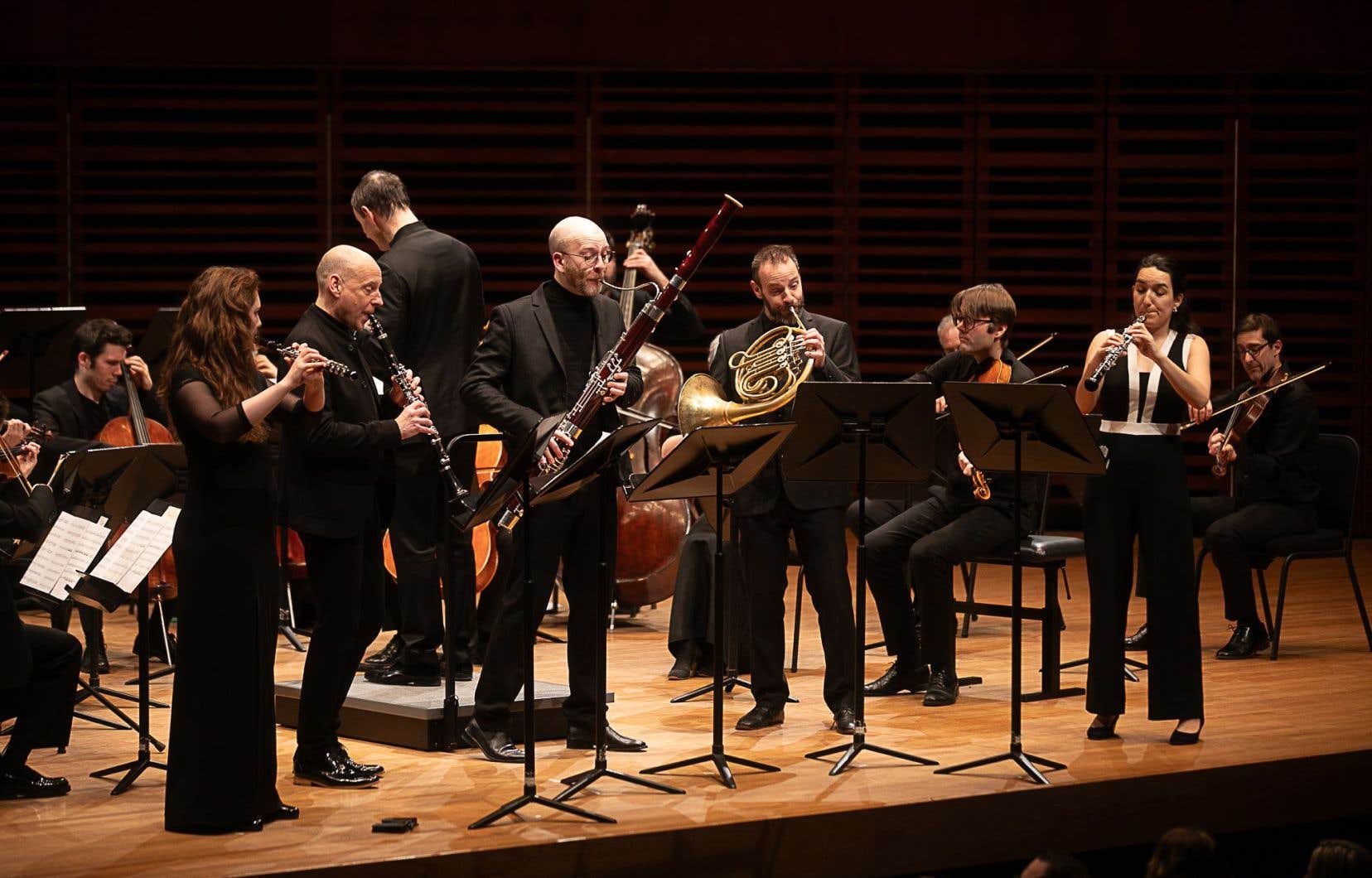Les Violons du Roy presented Friday evening at the Bourgie Hall a Haydn-Mozart program which made no mistake about its nerve center: two of the most spectacular scores of Mozart’s Parisian stay, played with relish for the greatest pleasure of the public.
Mozart’s travels are not anecdotal: they influence his musical production. This is the case, for example, with the splendid Milanese quartets of youth. When he arrived in France in 1778, Mozart found himself in a country that placed great importance on wind instruments.
The kingdom of the flute
If there is something to remember from all this, it is the presence of the flute in Mozart’s work, an instrument that the composer rarely used elsewhere. He had tried his hand just before in Mannheim, at the end of 1777, with the four Flute quartets. The emblematic work of the Parisian stay of 1778 is the Concerto for flute and harp K. 299. Mbut there is also this gem of Symphony concertante K. 297b, whose original score is lost. The genre was in vogue in the French capital: several soloists were placed in front of the orchestra. Mozart chose flute, oboe, bassoon and horn. It was a later adaptation that reached us, where the flute was replaced by the clarinet, which explains why two types of versions are in circulation.
The version presented this week, adapted by Mathieu Lussier for Pentaèdre, brings together the two worlds, since it adds an instrument and allows you to combine flute and clarinet. However, it is the flute which retains primacy: it is she who states the themes of the 2e movement.
Since adolescence, we have cultivated a particular tenderness for this irresistible work of Final with premium variations. Its rarity in concert is all the more astonishing. It was therefore a great pleasure to hear it played so well, with team complicity between the members and Pentaèdre and with a conductor who was never bored (see the contrasts of Final).
As such, Haydn’s overtures, starting with that ofArmida in the first part, allowed Jonathan Cohen to establish sound postulates. HAS Armida the density of the orchestra, the firmness of the ends of sentences and the science in mastering the natural resonance of the room. HAS The disabitata isola extreme virtuosity through the mastery of furious tempos and harsh accents.
Dogmas
Subject of astonishment in the balance: the way in which the oboe sometimes stood out in the opening ofArmida or, even, the introduction of 2e movement of the Concert Symphony. We also found this intransigence with the refusal to give in to the diktat of “absolute non vibrato”, an attitude faithful to certain musicological dogmas but in contradiction with the expressive warmth inherent in certain passages, such as the end of 2e movement of the Concert Symphony or the introduction of the slow movement of Concerto for flute and harp.
The latter also contains in its very essence the absurdity of approaching music with blinders instead of approaching it with a heart. Indeed, the flute is a vibrating instrument. His “song” therefore creates in this 2e movement a universe which fits very naturally with a reasonable dosage of vibrato on the strings. We don’t need to play Franck Pourcel, but we don’t need to X-ray Mozart either. But hey, we’re not going to ramble. We hear the same emotional desiccation when Cohen accompanies the piano concertos with Charles Richard Hamelin… and the world likes it (or pretends… or doesn’t hear everything that’s missing).
Just as charming as the K.297bTHE Concerto for flute and harp benefited from an accomplice duo. We first noted the admirable balance, which is not self-evident, because the harp is rather a sound instrument. Second satisfaction: the wonderful assurance and solidity of Ariane Brisson. Third happiness: the magical sentences, born from silence, by Valérie Milot. The harpist got a little confused towards the end of her cadenza of 2e movement, but it doesn’t matter at all, because the alchemy between the two musicians was magical and, aside from the question of human and musical warmth, the accompaniment of Jonathan Cohen and the Violons du Roy was attentive, precise, invested and contrasted.
